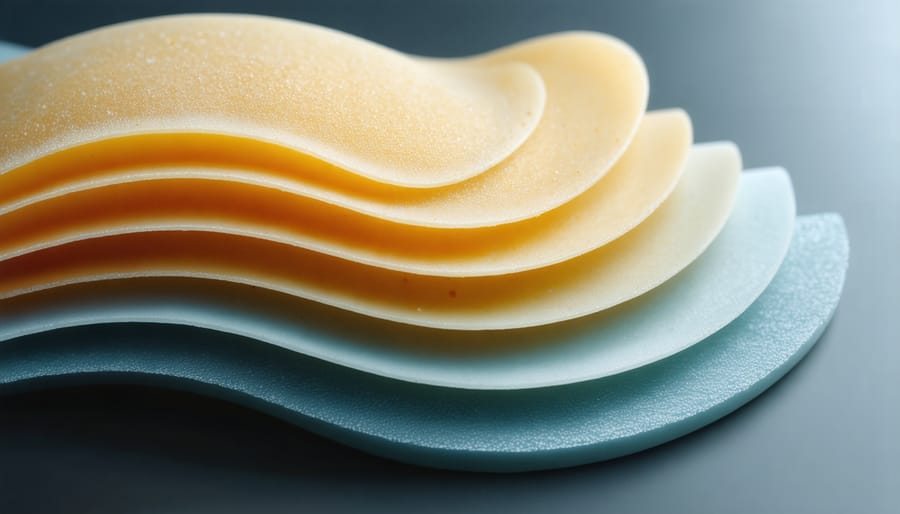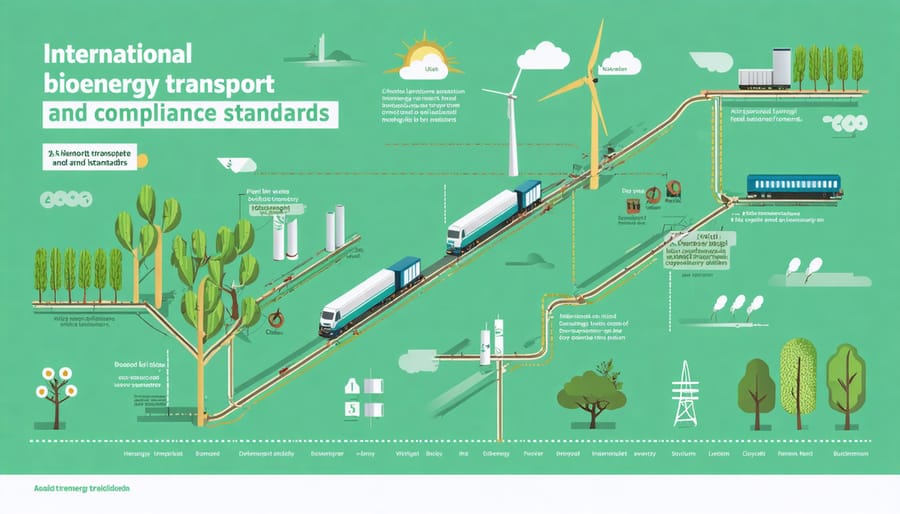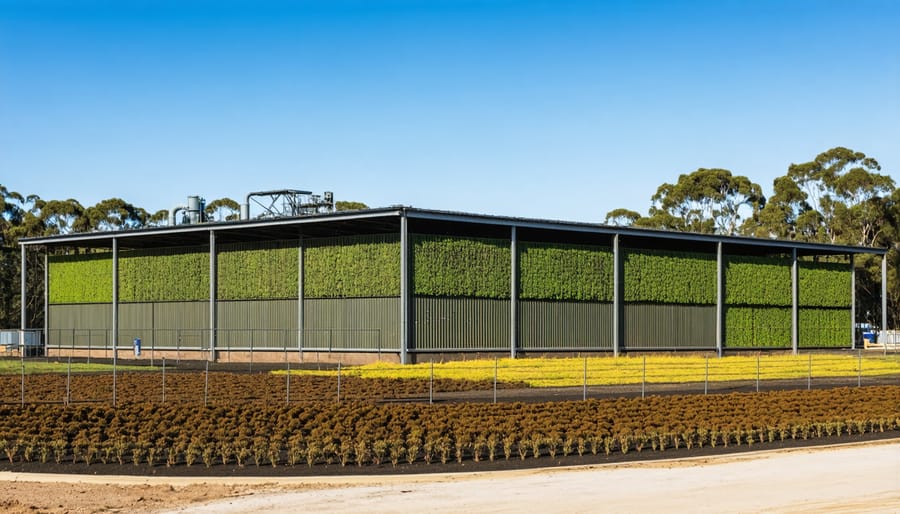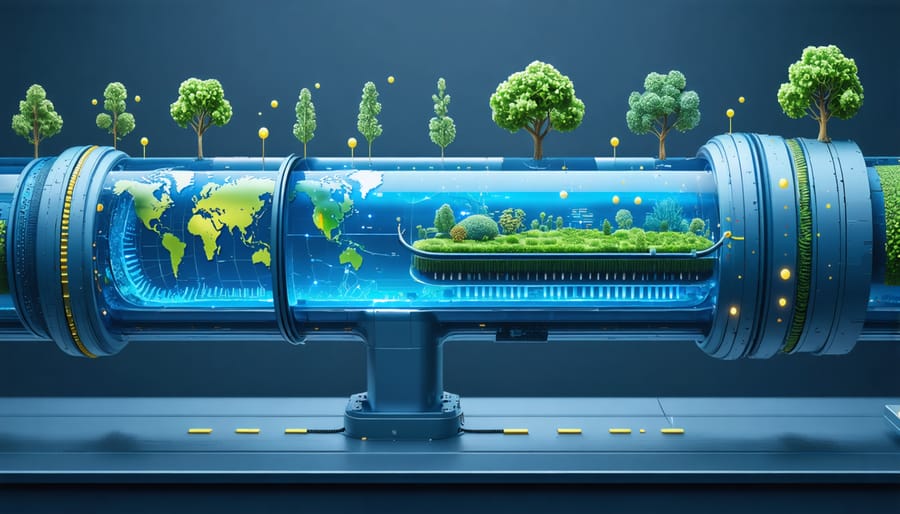V-bio enhanced polyethylene encasement represents a groundbreaking leap in sustainable bioenergy transport, revolutionizing how Australia participates in international biomass innovation. This advanced protective technology combines the durability of traditional polyethylene with bio-based additives that create an intelligent barrier system, actively protecting valuable biomass materials during long-distance transportation. By incorporating specialized microorganisms that target and neutralize harmful bacteria while maintaining structural integrity, v-bio enhancement delivers unprecedented protection levels without compromising environmental sustainability. For Australian renewable energy providers and global trading partners, this innovation addresses the critical challenge of preserving biomass quality across vast distances, opening new possibilities for clean energy cooperation and sustainable resource management. The technology’s emergence marks a pivotal moment in Australia’s transition toward more reliable and environmentally responsible energy solutions, particularly in cross-border trade scenarios where material preservation is paramount.
Understanding V-Bio Enhanced Polyethylene Technology
How V-Bio Enhancement Works
V-Bio Enhancement transforms traditional polyethylene encasement through an innovative process that infuses the material with powerful antimicrobial compounds. This enhancement occurs during manufacturing, where specially formulated bioactive agents are permanently bonded to the polyethylene molecules, creating a protective barrier that actively works to prevent bacterial growth and microbiological-influenced corrosion.
The technology operates through a dual-action mechanism. First, it releases antimicrobial compounds in a controlled manner, effectively suppressing bacterial activity in the surrounding soil. Second, it creates an inhospitable environment for microorganisms that typically contribute to pipe deterioration. This sophisticated approach ensures long-term protection without harmful environmental impacts.
What sets V-Bio Enhancement apart is its ability to maintain effectiveness throughout the material’s lifespan. Unlike traditional coatings that may wear off over time, the enhancement is integral to the encasement’s structure. The technology has proven particularly valuable in Australia’s diverse soil conditions, where varying moisture levels and bacterial populations can pose significant challenges to infrastructure integrity.
The enhancement process requires no special handling or installation procedures, making it a practical solution for both new installations and replacement projects.

Key Safety Features
V-bio enhanced polyethylene encasement incorporates multiple layers of protection to ensure the safe transport and storage of bioenergy materials. The outer layer features UV-resistant properties that shield against harsh Australian sunlight, while the middle layer contains specialized antimicrobial compounds that prevent bacterial growth. These compounds are environmentally friendly and maintain their effectiveness throughout the material’s lifespan.
The inner layer provides exceptional mechanical strength, offering protection against punctures and tears during handling. This triple-layer design creates a robust barrier against moisture infiltration, which is crucial for maintaining the integrity of stored materials. The technology also includes built-in indicators that change colour when compromised, allowing for quick visual inspection and immediate response to potential breaches.
Additionally, the material’s fire-resistant properties and low environmental impact make it an ideal choice for sustainable storage solutions.
Cross-Border Policy Implications

Current International Standards
V-bio enhanced polyethylene encasement is governed by several key international standards that ensure consistent quality and performance across borders. The American National Standards Institute (ANSI) and American Water Works Association (AWWA) jointly maintain the ANSI/AWWA C105 standard, which specifically addresses the requirements for polyethylene encasement of ductile iron pipe systems. This standard has been updated to include specifications for v-bio enhanced materials.
In Australia, these materials must comply with AS/NZS 4020 standards for products in contact with drinking water, while also meeting the requirements set forth in AS 3680 for polyethylene sleeving. The International Organization for Standardization (ISO) has incorporated guidelines for v-bio enhanced materials within ISO 8180, which covers protective polyethylene sleeves for ductile iron pipes.
These standards outline specific requirements for material composition, thickness tolerance, elongation properties, and resistance to environmental stress cracking. They also establish testing protocols for verification of antimicrobial properties and long-term durability, ensuring that v-bio enhanced products maintain their protective capabilities throughout their service life.
Policy Harmonisation Efforts
Recent years have seen significant progress in harmonising international standards for v-bio enhanced polyethylene encasement across different jurisdictions. Australia has taken a leading role in these efforts, working closely with global bioenergy networks to establish consistent guidelines for material specifications and implementation protocols.
The Australian Bioenergy Standards Committee has been collaborating with counterparts in North America and Europe to develop unified testing methods and performance criteria. This coordination has resulted in the development of the International Bio-Protective Coating Framework (IBCF), which provides a standardised approach to material certification and quality assurance.
Key achievements include the alignment of environmental impact assessment requirements, standardisation of testing protocols, and establishment of mutual recognition agreements between participating nations. These efforts have significantly reduced trade barriers while maintaining rigorous safety and performance standards.
Looking ahead, industry stakeholders are working towards implementing a unified digital tracking system that will further streamline compliance verification and enhance transparency across international supply chains.
Australian Implementation and Benefits

Economic Advantages
The implementation of v-bio enhanced polyethylene encasement offers substantial economic benefits across the bioenergy supply chain. Companies adopting this technology typically see a 25-30% reduction in maintenance costs compared to traditional protection methods. This innovative solution is actively revolutionizing Australia’s green energy future by extending infrastructure lifespan and minimizing replacement frequency. The initial investment is offset by significant long-term savings, with most installations showing positive returns within 3-5 years. Additionally, the technology’s superior protection capabilities have opened new market opportunities, particularly in challenging environmental conditions where conventional solutions fall short. Insurance providers are increasingly recognizing these benefits, offering more favorable premiums to operations utilizing v-bio enhanced systems. This translates to reduced overall operational costs and enhanced competitiveness in the growing sustainable energy sector.
Environmental Impact
V-bio enhanced polyethylene encasement represents a significant step forward in sustainable infrastructure solutions. This innovative material reduces environmental impact through its unique biodegradable properties while maintaining robust protection for underground pipelines. Unlike traditional pipe protection methods, v-bio enhanced polyethylene breaks down more naturally when exposed to soil microorganisms, leaving minimal environmental residue.
The manufacturing process requires less energy compared to conventional materials, resulting in a smaller carbon footprint. Additionally, the extended service life of protected pipes means fewer replacements and reduced resource consumption over time. The technology also helps prevent soil contamination by creating an effective barrier that deteriorates responsibly rather than persisting in the environment indefinitely.
Perhaps most importantly, this solution supports Australia’s commitment to sustainable infrastructure development while addressing practical environmental challenges. By choosing v-bio enhanced polyethylene encasement, organizations can effectively balance infrastructure protection needs with environmental stewardship.
V-bio enhanced polyethylene encasement represents a game-changing innovation in Australia’s pursuit of sustainable energy solutions. By providing superior protection and enhanced biodegradability, this technology has effectively addressed key challenges in cross-border bioenergy transport, making renewable energy trade more viable and environmentally responsible. As Australia continues to expand its renewable energy capabilities, v-bio enhanced polyethylene plays a crucial role in ensuring safe, efficient, and environmentally conscious transportation of bioenergy materials. The technology’s success in facilitating international trade while maintaining environmental standards sets a promising precedent for future developments in sustainable energy infrastructure. Moving forward, this advancement will continue to support Australia’s transition to clean energy and strengthen our position as a leader in renewable energy innovation, creating a positive ripple effect throughout the Asia-Pacific region.

